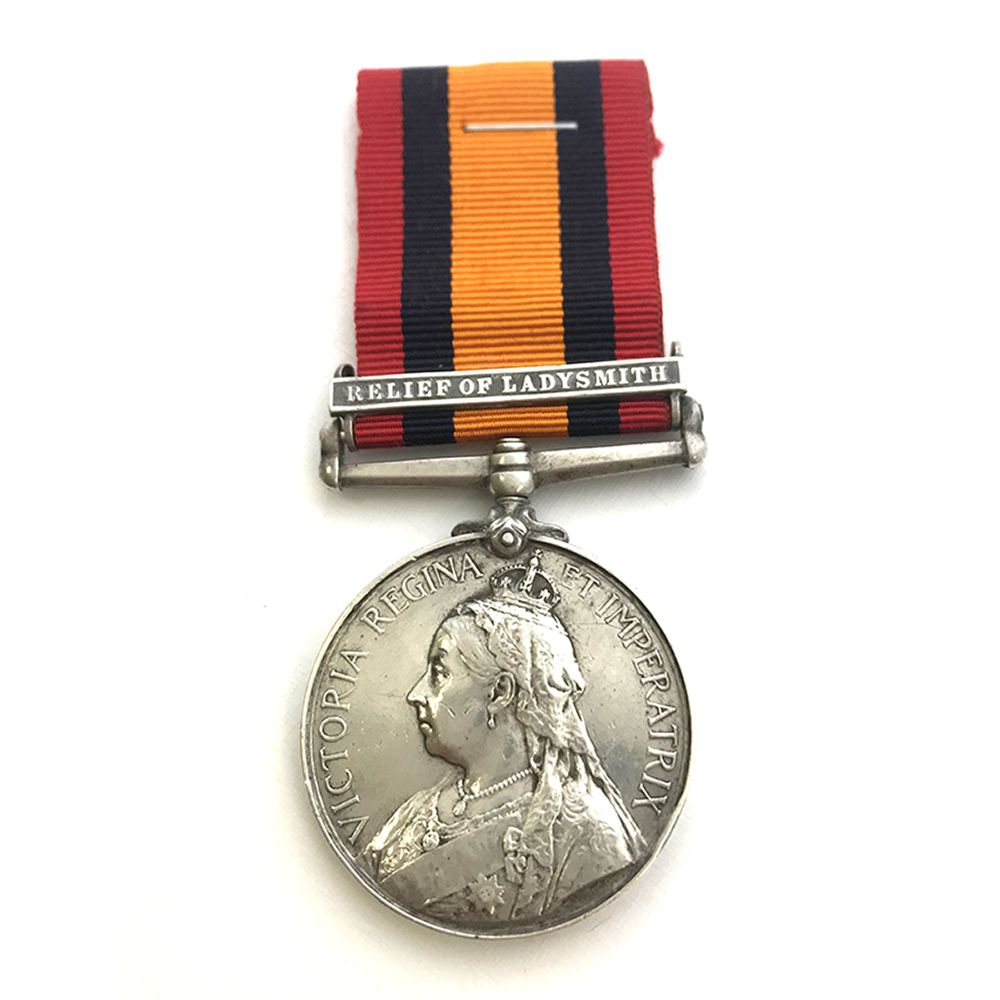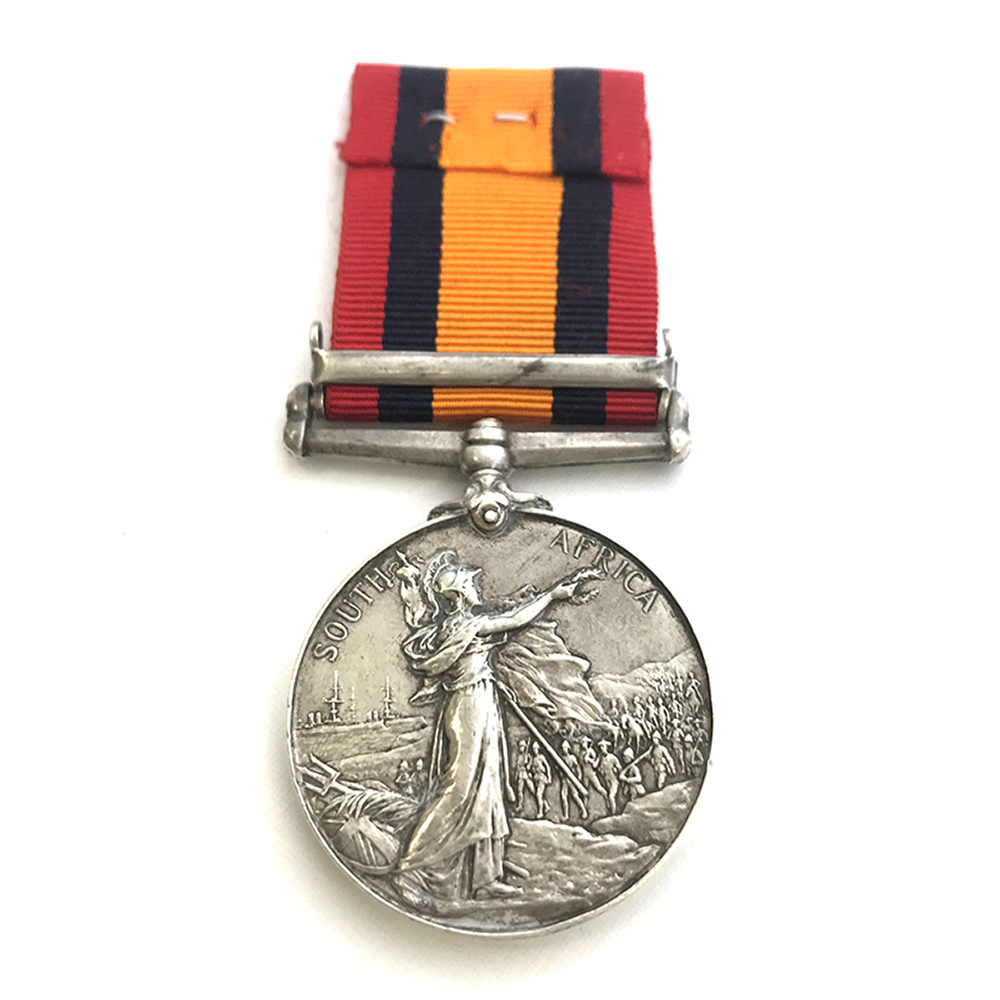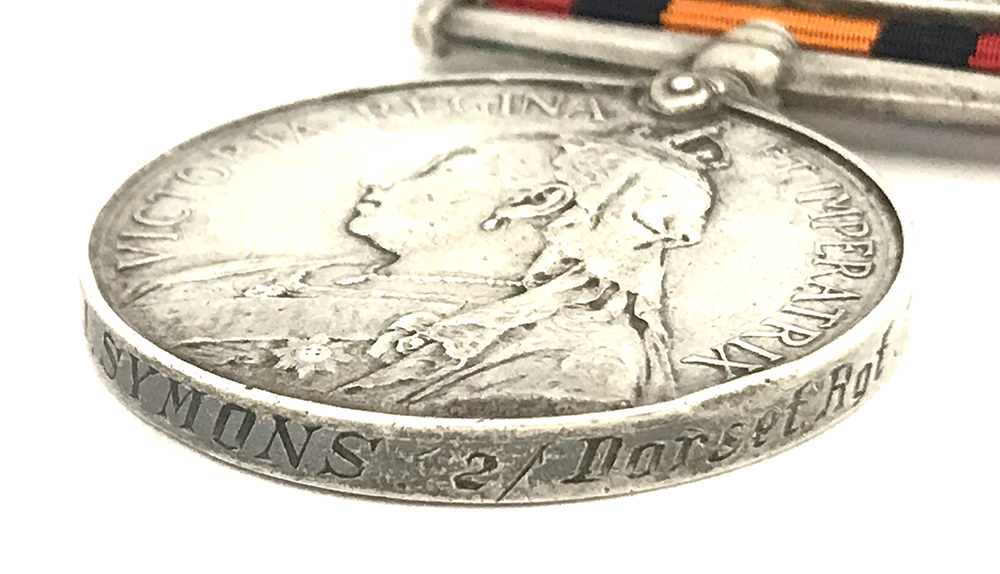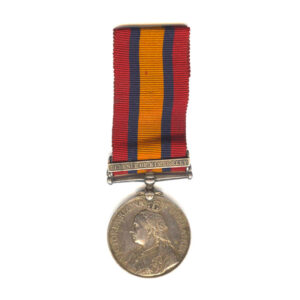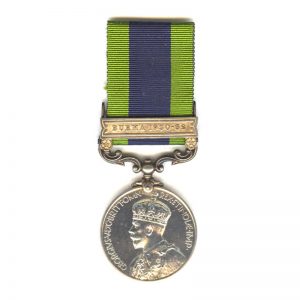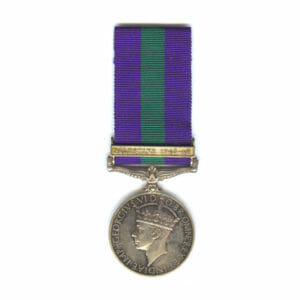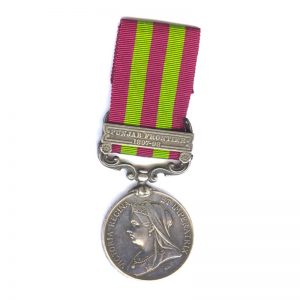Description
Queen’s South Africa Medal, bar Relief of Ladysmith, 4953 Private J. Symons, 2nd Bn Dorset Regiment. Invalided home earning an unusual single bar medal.
Officially engraved in the distinctive style seen to the regiment: “4953 Pte J. Symons. 2/Dorset. Rgt.” Some contact marking and a small edge bump through wear.
Confirmed on the medal roll, an unusual single bar entitlement the roll remarks reading: “Invalided Home”.
Likely very few single bar Relief of Ladysmith’s issued to the regiment.
John Symons, was born during 1878 in St Brides, London. His father Daniel lived in Fleet St & White Friars St in London.
Aged 18 he attested for service with the Dorset Regiment at London on 16th June 1896, having worked as a Baker.
He cited previous service with the 3rd Royal Fusiliers, having purchased his discharge.
He saw the following service:
Home, 16th June 1896 – 11th January 1897
Malta, 12th January 1897 – 2nd Feb 1899
South Africa, 24th November 1899 – 9th April 1900. Invalided Home
Home, 10th Apr 1900 – 15th June 1908.
Discharged after 12 years service on 15th June 1908.
During the Boer War he arrived early on the Simla, which had set off on 28th November arriving in Cape Town around 17th December 1899.
The 2nd Dorsets formed part of the 10th brigade under Maj Gen Talbot Coke.
Notably the regiment was engaged in the operations around Venter’s Spruit and Spion Kop. Their first real engagement came on 24th January 1899 during the “Relief of Ladysmith” operations when they alongside the Middlesex regiment climbed to the summit at Spion Kop. they were fortunate to avoid many casualties unlike the Middlesex Regiment who posted to the worst part of the battle.
The regiment later earned a unit wide mention in General Warren’s despatch for having “rendered great service in carrying down a large quantity of ammunition in the dark which would otherwise have fallen into the hands of the enemy.”
Most of the 2nd Dorsets, excluding Symons would go on to earn the Tugela Heights clasp for service near the Tugela River between 14th Feb to 27th Feb 1900, so Symons is likely to have become a casualty of some sort around the Spion Kop period, but he is not listed on any casualty lists.
His papers record his arrival home around 9th April 1900.
